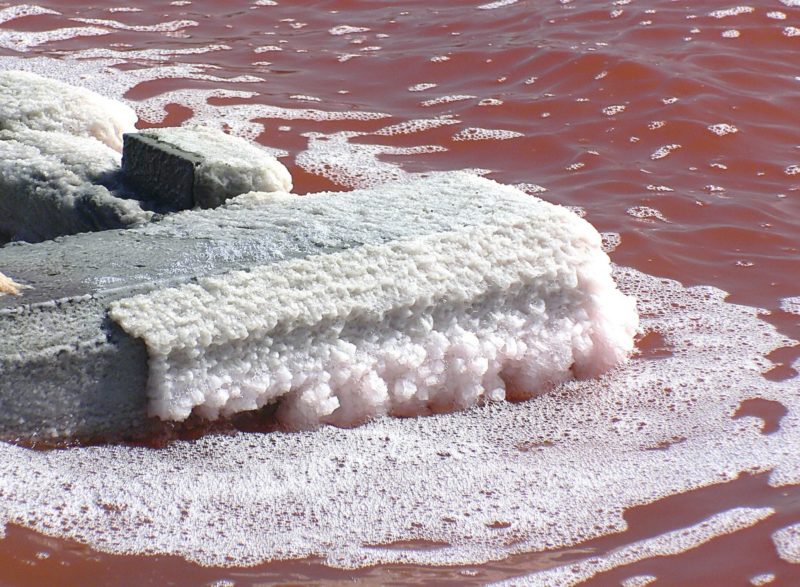Have you ever wondered about how to clean calcium out of water heater? No more worries, you have arrived at the right place. Vinegar and lye are the most efficient substances for removing calcium deposits. After flushing the heater, just let substances rest inside the reservoir for several hours before washing it before using it.
When you notice strange loud thumps emanating from your heater, calcium has likely built up inside the heater.
Calcium buildup is solid iron deposits that form on your water heater’s heat source and other parts as a result of hard water. Not only can you remove the sediments, and you can also maintain your heater functioning smoothly. The massive amount of calcium water leaves behind, the hotter it is. Keep in mind that your heater isn’t set very high, then the company’s suggested temperatures, often around 125 and 145 degrees Fahrenheit. Continue to reading to learn more!
Tips To Clean The Calcium From Water Heater
Calcium is beneficial to your teeth and bones, but it is not healthy for your home’s heater. Calcium can start building up within the water heater’s reservoir if left unchecked, increasing your monthly power expenditures and causing your device to decompose sooner than intended. The great news is that regular maintenance can keep calcium buildup from causing damage to the heater. Read the below-mentioned tips to learn how to clean calcium out of water heater.
#1. Examine your water heater
First, inspect the water heater to see if there are any calcium formations or if it’s simply silt. Shut off the heater as well as the excellent water supply. Connect a water line to a drain faucet and maintain the remainder of a hose far from the drain faucet so that heat may escape securely. Inspect for any minor or significant whitish specks by opening the drain faucet. Calcium accumulations can be seen if you observe them. Remove the cold water input line, which usually is just on the head of the heater, to allow air to enter the hot water tank. Shut the drain after trying to make sure the reservoir is empty.
#2. Add vinegar and other acids
Put a bottle of the acidic tub, vinegar, tile cleaning, or another chemical lime cleanser into the cooling input pipe single cup, stopping it after every cup. Gas development is avoided by stopping among drinks. Empty the unit after some hours. Most of all of the sediments should be eliminated by cleaning. Use a Ziploc baggie to tie snugly over the ice water input line to see if the cleaning still is functioning. Wait a little bit if the balloon expands since the cleaners are still operating on the residues.
Allow at least six hours for the vinegar solution to decompose and remove the sediments caked onto the interior of a hot water system. As a side note, make sure everyone in your house knows that your water heater could be out of service for a week before you begin this operation.
#3. Drain the water
To cleanse the water heater, attach the cooling inlet line, switch on the heater, then release the cold water intake faucet. Activate the heated water tap closest to the heating element to refill the heater, then shut the drainage. Let the drains and then let the heater wash once you notice water pouring out of the valve. When closing the drain, make sure the water is clean, and there are no bubbles. Switch on all of the warm water taps to remove the air from the heater. Now re-start the heater. Know how to drain a hot water heater.
Cons Of Calcium Deposits In Water Heater
Building an insulation layer between the liquid and the gas burners is among the principal drawbacks of calcium deposits in heated water heaters. As a result of the silt slowing heat exchange, the tank’s base overheats. The steel weakens due to the warming, causing the crystal covering to shatter. As a result, the tank’s ‘life expectancy may be shortened. It covers the bottom component in the instance of appliances, causing it to go down. It also reduces the reservoir’s ability to preserve sufficient energy fertile ground for developing toxic anaerobes.
Sedimentary can get into the circulation pipes, clogging up open check valves and causing the electrical motor to burn out. Calcium deposits can also jam the discharge valve, stopping any water from going and pushing the container to make a lot of noise, which can be bothersome on occasions.
Why Is It Important To Drain Calcium Deposits?
Calcium buildup and sediments are to blame if your water costs are rising and the water heater isn’t performing as well as it should. Deposits on the bottom of the vessel or components impede heat conduction into the hot water. As a result, the cost of hot water is higher, and the time it takes to get hot water is prolonged. By cleansing the heater every several months, obtaining a filtration system, and connecting it to the entering water system, you may avoid buildup. Know how to get sediment out of water heater.
It’s A Wrap!
We are happy to know that you have learned about how to clean calcium out of water heater; if you think your water heater is not working properly, it might be a cause of a calcium deposit inside your heater. You must need to clean the calcium buildup from your water heater to avoid any problems. Thank you, friends, for sticking with us!
Also, find out the answers to your questions: how to clean hot water heater and how to hide your water heater.

